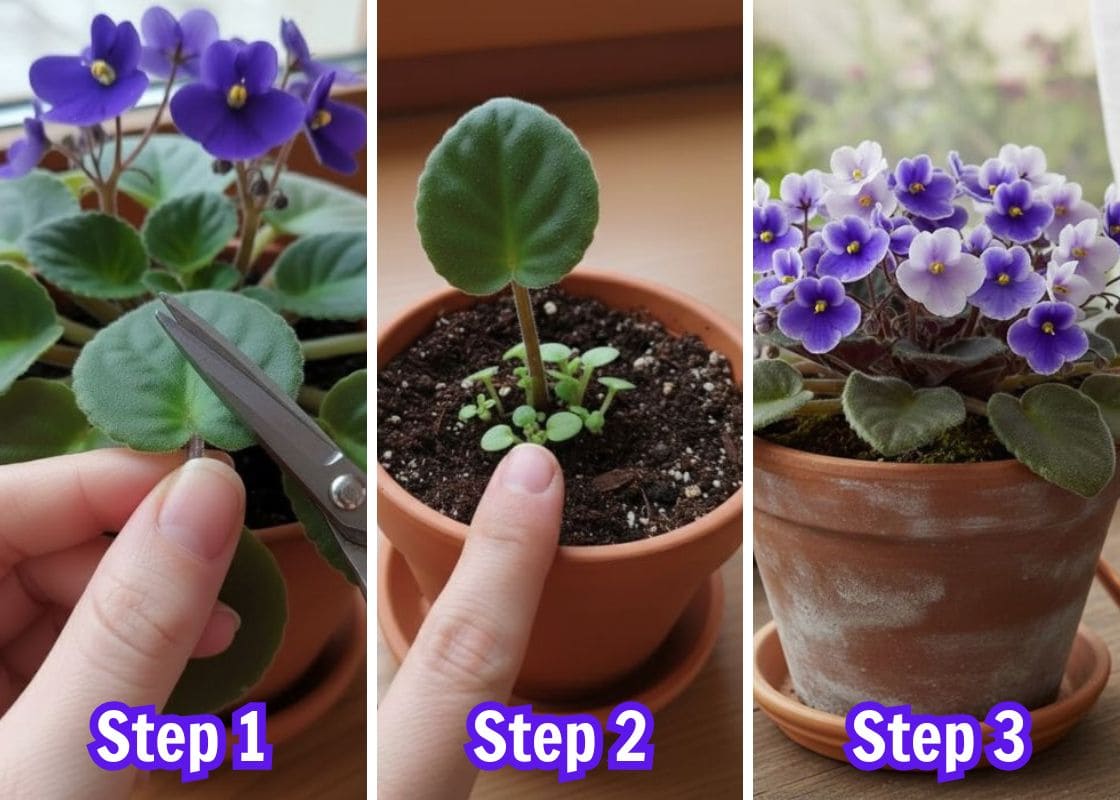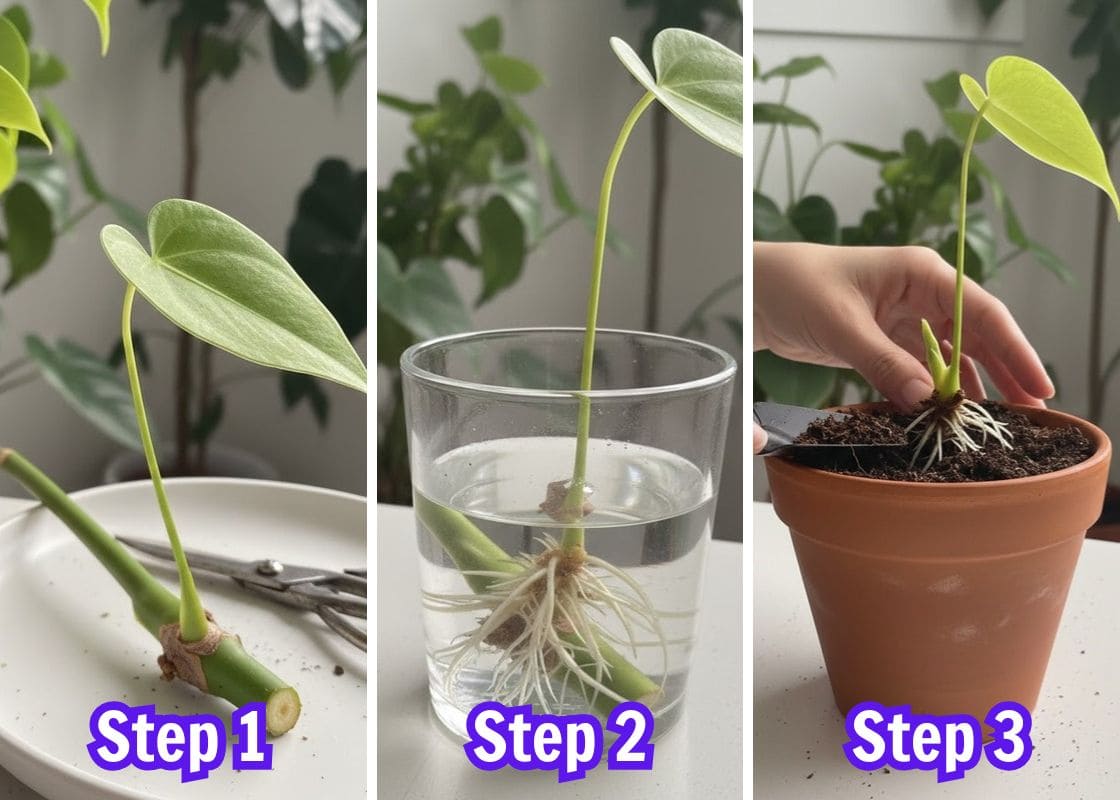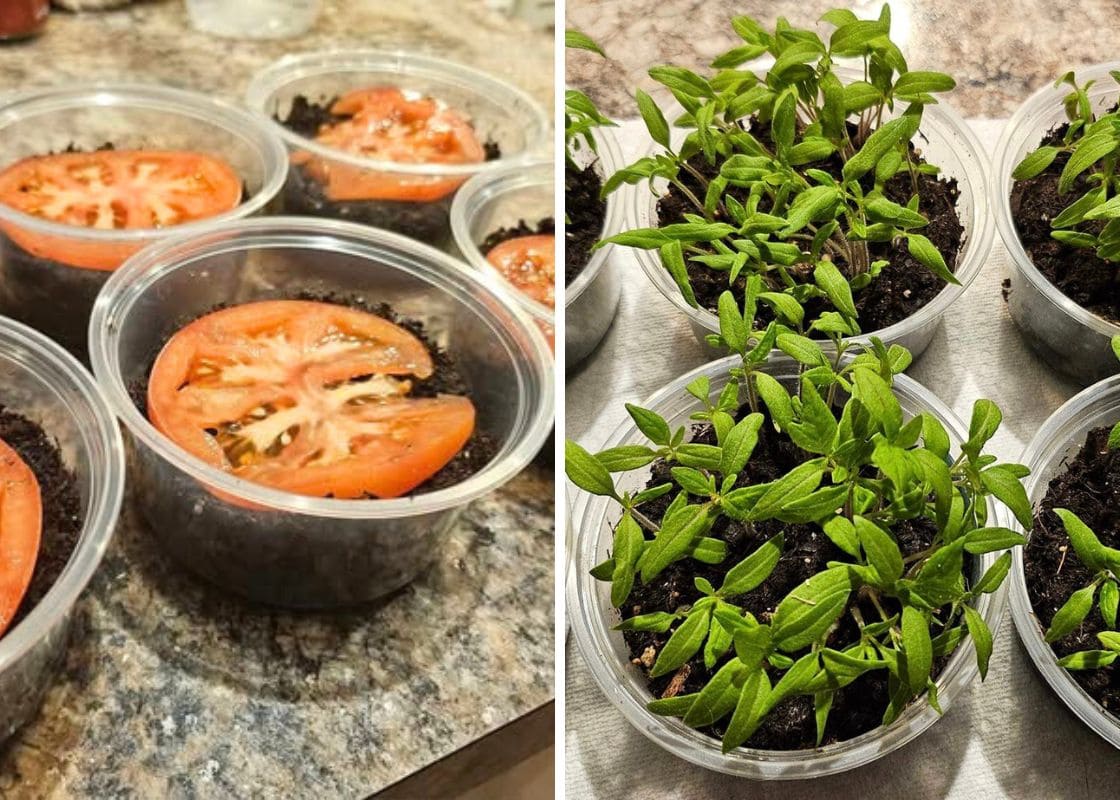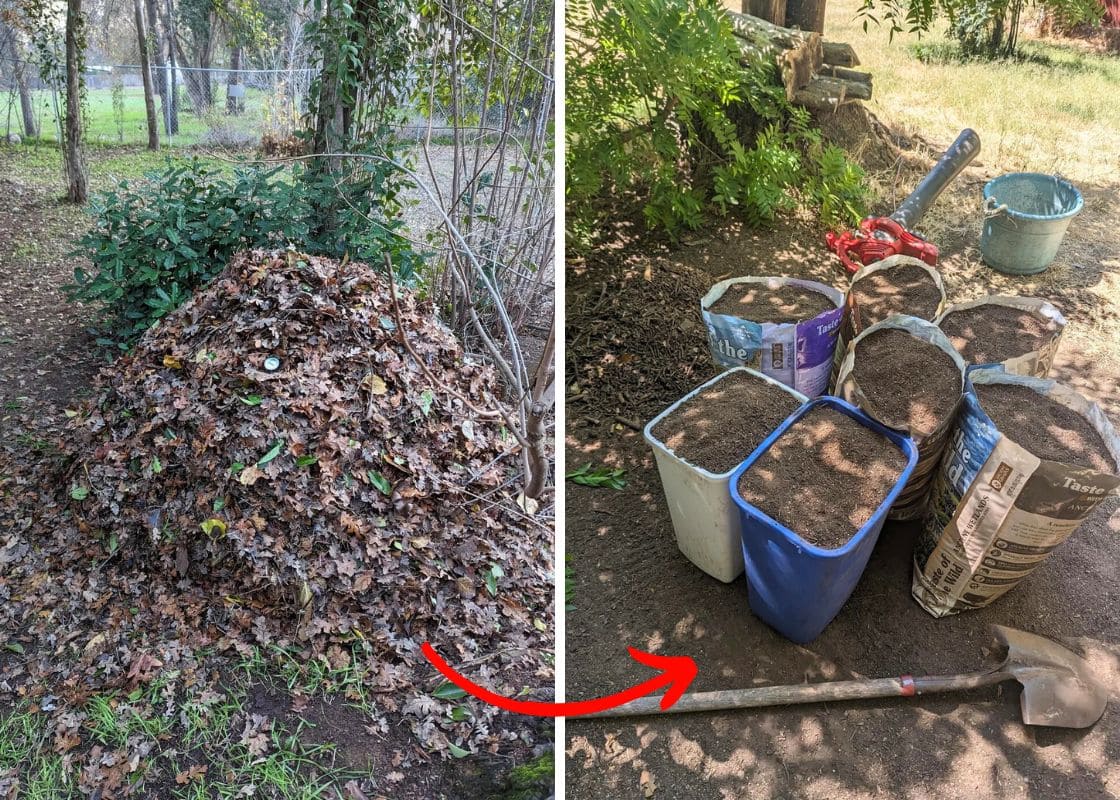According to legend, crown of thorns traces back to the crown of thorns worn by Jesus Christ.
In Thai culture, it is revered as Poysean, meaning “eight saints,” believed to bring luck and blessings to homes where it thrives.
This resilient succulent originates from Madagascar, captivates with its vibrant flowers and rugged, thorn-covered stems.
Whether you’re seeking to enrich your living space with luck or simply appreciate its enduring beauty cultivating the Crown of Thorns offers a perfect solution.
Summary:
- You can propagate crown of thorns from cuttings for best results and place in a pot with good airflow and drainage.
- Provide bright, indirect sunlight, moderate watering, and temperatures between 65-85°F, then fertilize sparingly during the growing season.
- Watch for pests and ensure good soil drainage to prevent root rot and maintain consistent conditions.
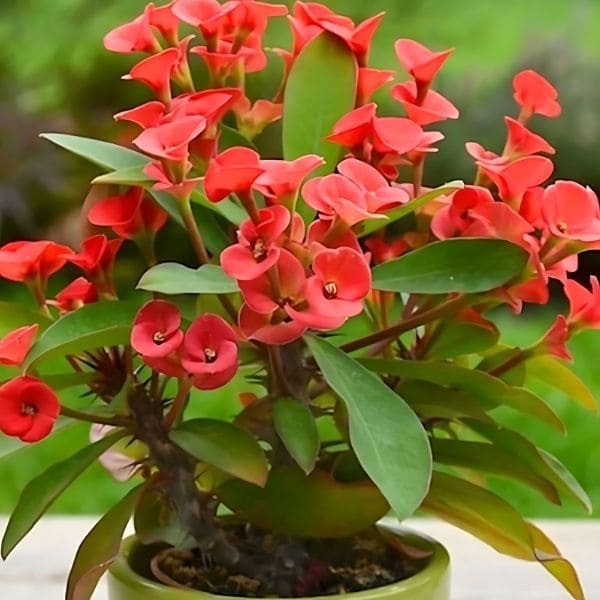
| Scientific name | Euphorbia milii |
| Common name | Crown of Thorns, Christ Plant, Christ Thorn |
| Family | Euphorbiaceae |
| Plant Type | Succulent |
| Height | 3-6 ft. tall outdoors, 2 ft. tall indoors |
| Sunlight | Full sun to partial shade |
| Flower Color | Red, pink, white, yellow |
| Blooming Season | Year-round |
| Thorns | Sharp, 1-inch long |
| Native Area | Africa |
Propagation
For optimal results, propagate crown of thorns from cuttings rather than seeds, which have short viability and lengthy germination periods.
You need to select a healthy stem with vibrant green color and no signs of damage and use clean, sharp scissors to cut a 3 to 4-inch stem.
Then, remove lower leaves to prevent rot and dip the cut end in rooting hormone.
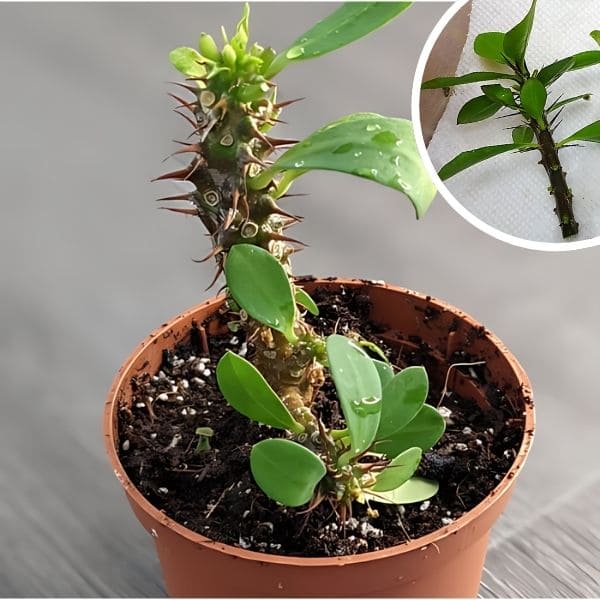
Next step, you plant the cutting in a well-draining mix of perlite and peat moss, ensuring good aeration and moisture retention.
You should place your pot in a warm, bright location with indirect sunlight and mist lightly until roots develop, typically within 4-8 weeks.
Growing Crown of Thorns
Preparation
Crown of Thorns plant has over 2000 types. Here are the most common varieties you can refer to:
- Dwarf Apache: Compact size, perfect for small spaces. Features bright red flowers and spiky green foliage.
- Fireworks: Showcases multicolored blooms resembling bursts of fireworks, with colors ranging from pink to red and yellow.
- Bright Star: Large, star-shaped flowers in shades ranging from deep red to bright orange. Known for its striking floral pattern and vigorous growth.
- Yellow Giant: Produces large clusters of bright yellow flowers, making a bold statement in garden beds or containers.
- Thai Hybrid: Robust growth with clusters of flowers in pink, red, and white hues. Renowned for its prolific flowering and adaptable nature.
- White Lightning: Features crisp white flowers against dark green foliage, offering a classic and elegant appearance.
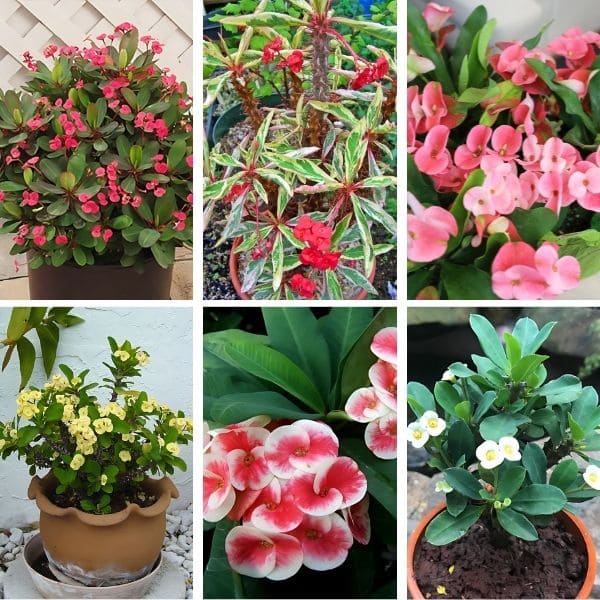
You also need to prepare perlite, coarse sand, and peat moss in equal parts suitable for cacti and succulents
Besides, you also have to aim for a slightly acidic to neutral soil pH (6.0-7.0) for healthy growth.
Choose a pot with drainage holes slightly larger than the root ball, favoring terra cotta or ceramic pots for better airflow.
Planting Crown of Thorns in A Pot
Firstly, you layer the prepared potting mix at the bottom and carefully position the plant in the center ensuring it’s secure but not overly compacted.
You also need to leave a small gap between the soil surface and the pot rim to aid in watering and allow for root growth.
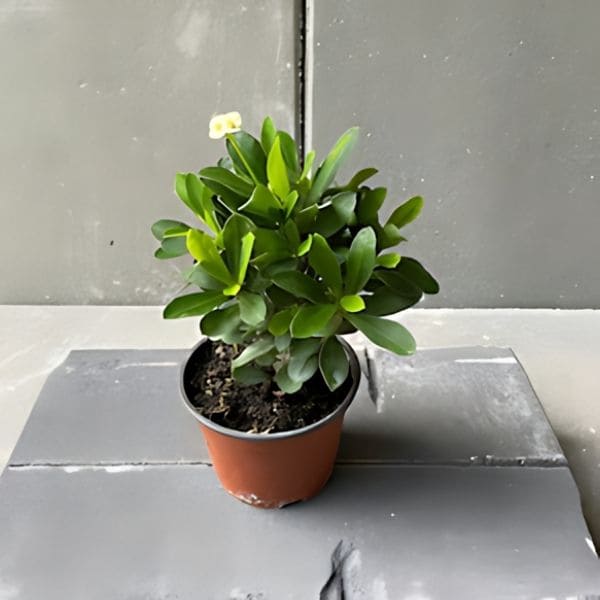
After about two years, if your plant shows signs of outgrowing its pot or the roots become crowded, it’s time to repot.
You use protective gloves and select a new pot that’s slightly larger in diameter than the current one to prevent overcrowding.
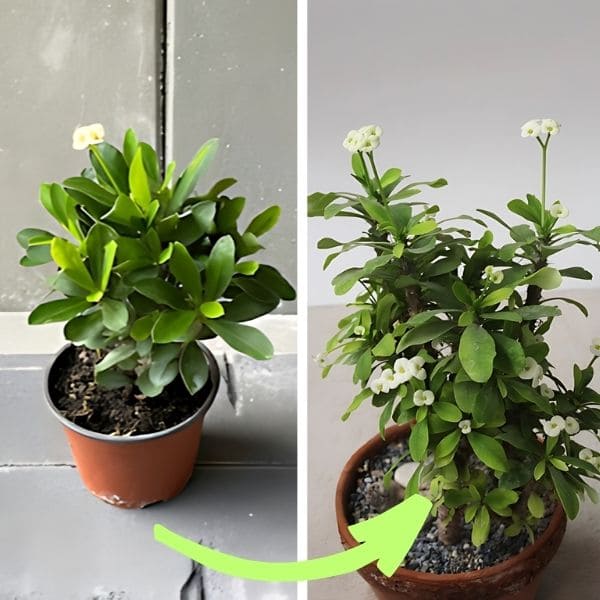
During repotting, gently remove the plant from its current container, loosening any tightly bound roots. Place it in the new pot, adjusting the soil level to match the previous planting depth.
Then, you surround the roots with fresh cactus potting mix and water thoroughly to help the plant settle into its new home.
Care for Crown of Thorns
To care for your crown of thorns plant, follow these key steps:
- Place in bright, indirect sunlight for 4-6 hours daily, maintaining temperatures between 65-85°F (18-29°C) and protecting from cold below 50°F (10°C).
- Water deeply when the top inch of soil is dry to avoid waterlogging.
- Use well-draining cactus or succulent potting mix. Feed with diluted balanced fertilizer during spring and summer.
- Prune to maintain shape and remove dead growth using gloves for protection.
- Repot every 2-3 years with fresh potting mix if the plant outgrows its container.
Light
Indoors, provide 12-14 hours of bright, indirect sunlight daily for optimal growth.
You can also use artificial grow lights in low-light conditions and rotate the plant regularly to ensure even exposure.
Outdoors, you should place in full sunlight to stimulate bud formation but shield from intense afternoon sun in warmer climates to prevent leaf scorching.
Water
Crown of thorns is drought-tolerant but requires moderate watering. You need to check soil moisture 1 inch below the surface and water when dry.
Increase watering in spring and summer, allowing soil to dry between waterings. In fall and winter, reduce watering to maintain slightly moist soil and prevent root issues.
Soil
You should use a blend of sandy soil, peat moss, perlite, and sand to enhance drainage and aeration preventing water accumulation and root suffocation.
Aim for a slightly acidic to neutral pH (6.0-7.0) to support healthy growth and flowering, avoiding heavy clay soils prone to root rot.
Temperature and Humidity
You need to maintain temperatures between 65°F to 85°F (18°C to 29°C) indoors and avoid drafts and temperature fluctuations.
Besides, increase humidity in dry climates with a humidifier or water tray nearby.
Outdoors, place in Zones 9-11, you should protect your plant from temperatures below 35°F (2°C) and intense afternoon sun to safeguard roots and foliage.
Pruning
In spring, you need to prune your crown of thorns to maintain shape and stimulate new growth.
Use protective gear and sterile tools to remove damaged limbs and prune above healthy buds or joints.
Fertilizer
Apply balanced, organic fertilizer diluted to half strength every 4-6 weeks during spring and summer.
Avoid high-nitrogen and boron-containing fertilizers to prevent sensitivity issues.
You should apply a 2-4-6 NPK ratio to support healthy growth and flowering, fertilizing sparingly during active growth phases.
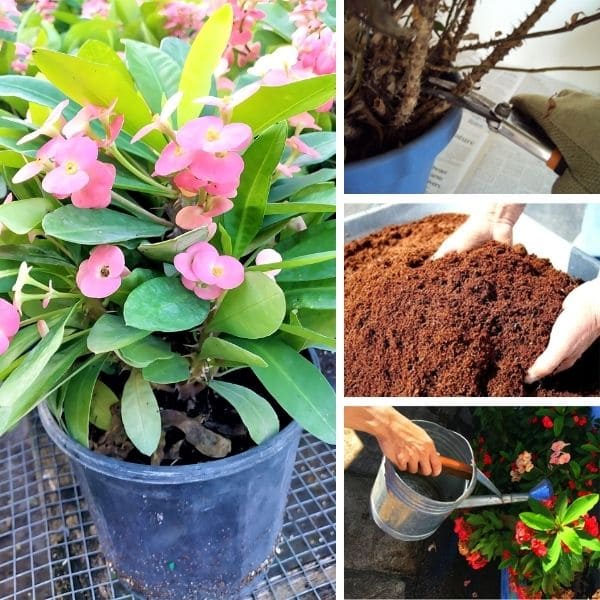
Pests and Diseases
Despite their hardiness, crown of thorns plants are vulnerable to pests and diseases. Spider mites thrive in dry conditions, sucking sap from leaves.
To manage them, you need to increase humidity with regular misting and wash leaves with water or use insecticidal soap.
Additionally, mealybugs appear as white, cottony masses on stems and leaves, draining sap and hindering growth.
You should remove them immediately by wiping with alcohol-soaked cotton swabs or using insecticidal soap and prune heavily infested areas to prevent spread.
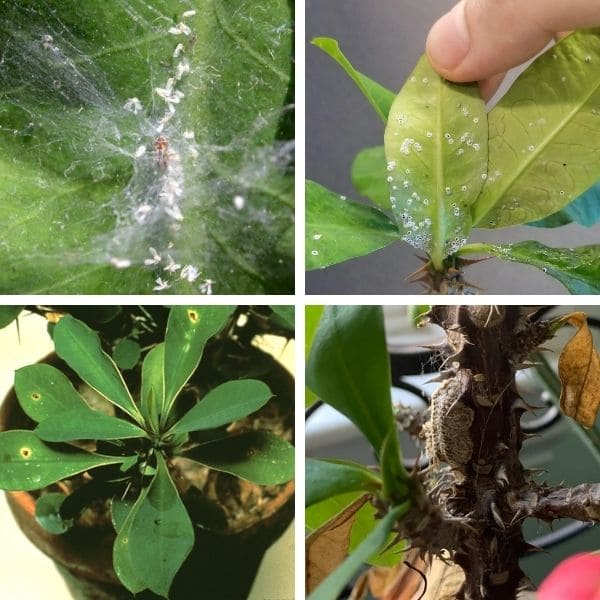
Besides, root rot, triggered by overwatering or poor drainage, results in wilting and yellowing.
You can prevent it with well-draining soil and moderate watering, then treat affected roots by trimming and repotting in dry soil.
If you see dark, water-soaked spots on leaves, you have to improve air circulation and prompt removal of affected foliage.
Severe cases may require fungicidal treatments, so you regularly monitor to sustain plant health.
Common Problems
Yellowing Leaves
Yellow leaves on your crown of thorns plant often indicate underwatering, sudden temperature changes, or poor soil quality.
Ensure regular watering, especially during active growth phases, and maintain consistent indoor temperatures.
Lack of Blooms
If your mature crown of thorns isn’t blooming, excessive nighttime light or overfertilization may be the culprits.
Encourage flowering by providing total darkness at night and using balanced fertilizer sparingly during the growing season.
Dropping Leaves
Excessive leaf drop suggests environmental stress like high temperatures or irregular watering.
Establish stable conditions with moderate temperatures and a consistent watering schedule to maintain healthy foliage throughout the growth cycle.
Oozing Latex sap
Sticky latex sap on stems or leaves indicates mechanical damage or pest infestation such as scale or mealybugs.
Address these pests promptly with appropriate treatments, carefully prune affected areas, and handle the plant gently to prevent further sap leakage.
Browning Stems or Leaves
Brown spots on stems or leaves may signal fungal infections due to moisture buildup or poor airflow.
You need to trim affected parts promptly and improve air circulation around the plant to prevent further fungal issues.
FAQs
How to make a crown of thorns bushy?
You should regularly prune the plant and cut back leggy stems to encourage branching.
I recommend rotating the plant to ensure even light exposure, which promotes fuller growth.
What happens when you touch a crown of thorns?
You may get pricked by its sharp thorns, which can cause minor skin irritation or discomfort.
Additionally, the plant’s sap can be irritating to the skin and eyes, so you need to wear gloves and wash your hands after handling it.
How long does a crown of thorns live?
A crown of thorns plant can live for many years, often thriving for decades with proper care.


